A white flag flies listlessly amidst the vines, hoisted on a flagpole guarded from above, from the tower of the Castle of the Bishops of Luni that gazes down on the village of Castelnuovo Magra and keeps an eye on those who flutter down on the plain and on the first offshoots of the Hills of the Sun, greened by the insistent rain of a humid, hot, rainy, boring autumn. The flag is Luca Bertolo’s: for at least a decade, a series of painted flags has been thickening his already copious production, and some of the most recent ones have now arrived on the Lunar plain, along with those of Flavio Favelli, to carpet the spaces of the Colombiera, a farm that wants to start, for the second year in a row, a “research laboratory,” as the official definition wants, on contemporary art. The Poetry of the Land is the title of the review, and as soon as one turns one’s gaze to the Colombiera vineyard, one immediately grasps the sense of that poetry that this year seems to give a voice, a soul, even a character to the land.
A white flag flies in the field. From a distance it looks like an ordinary piece of cloth, a rag, a snow-white remnant planted in the middle of the rows. Up close one notices frayed on the edges remnants of green and red. Fern green, bright white, scarlet red, the colors of the Italian flag fixed by decree of the prime minister. Shred of the Italian flag that has become a white flag, vulgarly understood as the flag of those who surrender, more properly the banner of those in the war who no longer want to fight and are willing to enter into negotiations, to end hostilities with a cease-fire, with a solution that brings everyone together, or with a surrender. Has Italy surrendered? Has the land surrendered? Does it no longer want to fight? Does it want to start negotiating? And with whom?
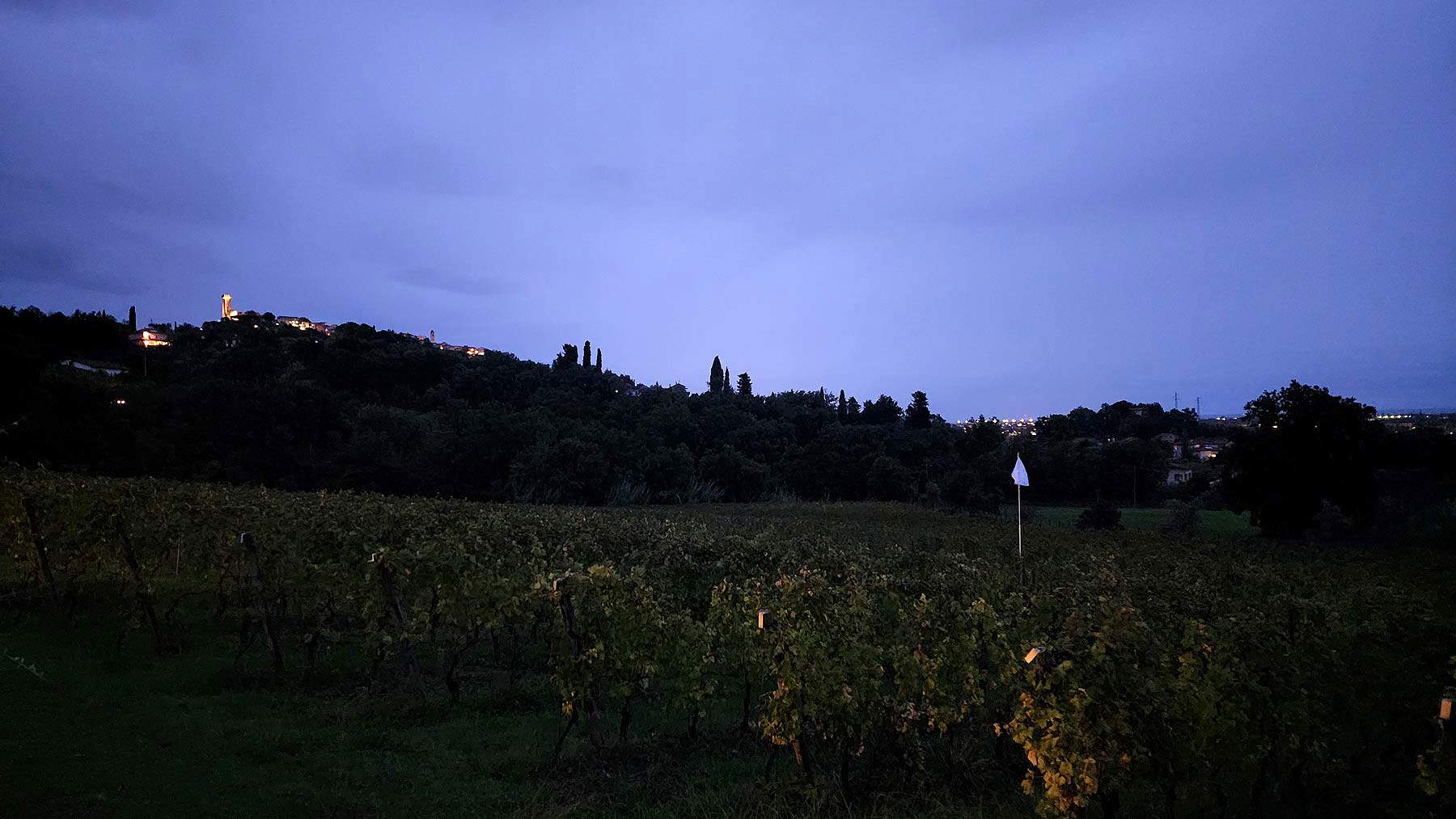
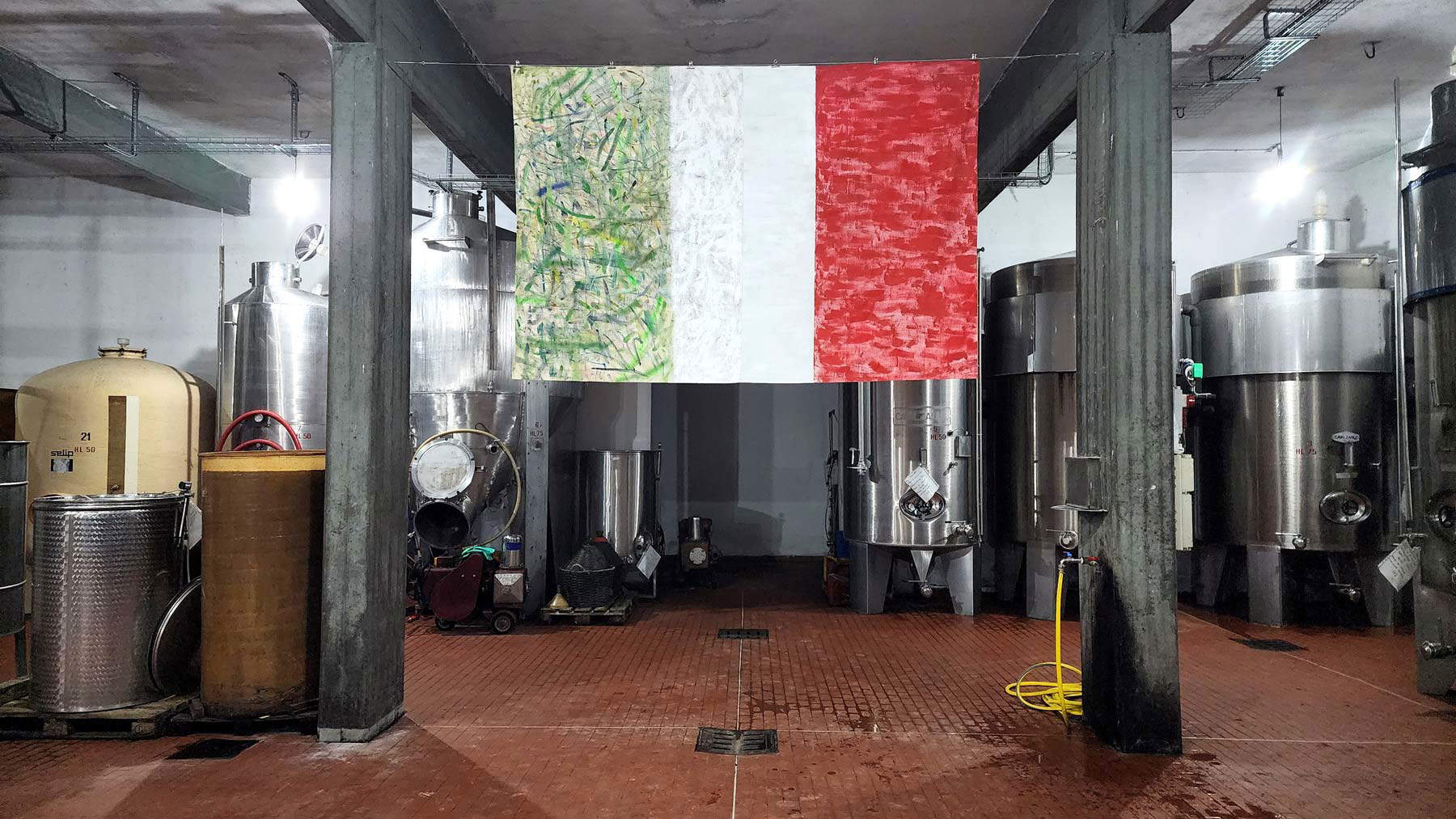
As I talk with Luca Bertolo about his work on flags, the memory goes back to the spring of coronavirus. We all remember, and well, the clumsy patriotism from Covid-19: that hypermarket patriotism, that ready-made patriotism, that volemosebbene patriotism that expressed itself with flags attached to the windows of apartment buildings, with the 12 noon 3 p.m. 6 p.m. appointment to sing Mameli’s anthem from the terrace, with the billboards swollen withunicorns and rainbows repeating all those platitudes, “it’s going to be all right,” “we’re going to make it,” “we’re going to come out better,” it seemed that the editorial intern assigned to answer the heart mail had earned in twenty-four hours in the field the promotion to director of national pandemic sentiment. Waffling patriotism, in the Labranchian sense of the term, that is, nurtured by the hyper-conviction that rallying around the tricolor, that raising Italians to newfound unity would help us better weather the moment of ambassadors. Naive, feral, awkward patriotism that punctuated the first days of the lockdown always all the same, for those who did not have an emergency at home: waking up late, the peach blossoms in the garden not giving a shit about the lockdowns and going about their usual lives, how will it be that that clerk in Codogno caught a Chinese virus, the six o’clock press conference hoping that the civil defense chief would communicate some good news, the television studio of the pre-evening quiz without an audience, the silent streets, the relative thefriend the colleague becoming numbers, the logarithmic scale, the intensive care unit, the red zone, the state of emergency, the assemblies, FFP2, outbreak, comorbidity, positivity, cluster, droplet, tracking, spacing, self-certification, tracking, phase 1, phase 2, when can you go out again? The next day same story, same problems, same flags waving from the balcony.
What happened then, it must have been a month after the red zones were closed, was that Vanity Fair reproduced on its cover the flag of Francesco Vezzoli mocking Fontana and cutting a canvas painted in tricolor by pouring cheap oil on the gears of collective emotion. The following year, Bertolo and Favelli finished work on their flag, a four-handed job, in the most literal sense of the expression: each took care of half the flag, then took it to a seamstress who put the pieces together and the result is what can be seen in the Colombiera cellar, amidst the barrels from which the Vermentino lunense, the prized nectar of these lands, pours. And that is a flag that is alive and stark, light and heavy, taut and scratched, instinctive and controlled, gestural and rational, a work that contradicts itself - again literally, because all you have to do is turn around and see the back of it to observe a completely different work where even the relationship of proportions between the backgrounds of the tricolor is lost.
In the exhibition text, curator Antonio Grulli asks - for us - what flags are: perhaps a relic of the past, or the symbol of “nation states within which everyone now seems to feel cramped,” or even “the collector of ideological visions that have now failed.” And then he quotes Franco Fortini, “to whom Bertolo was very close and from whom he visited his home in Ameglia.” When asked what a flag is, Fortini would have replied that it is the banner under which tower the comrades from whom the poet wants to isolate himself by preferring dissent to apologetic orthodoxy(Une tache de sang intellectuel). Or, more simply, he would have sung his version of Mameli’s hymn (“Brothers of Italy each for himself: / a little silence, / a little sin, / a little conscience, / a little repentance this small, / a little Fiat for Sunday, / and God for all”). Fortini’s bitter irony is a sentiment not so far removed from that which drips down from Bertolo and Favelli’s flag, without reaching iconoclasm, for that would perhaps be too simple, too banal. One reads in it, if anything, a paradox, or something like that.
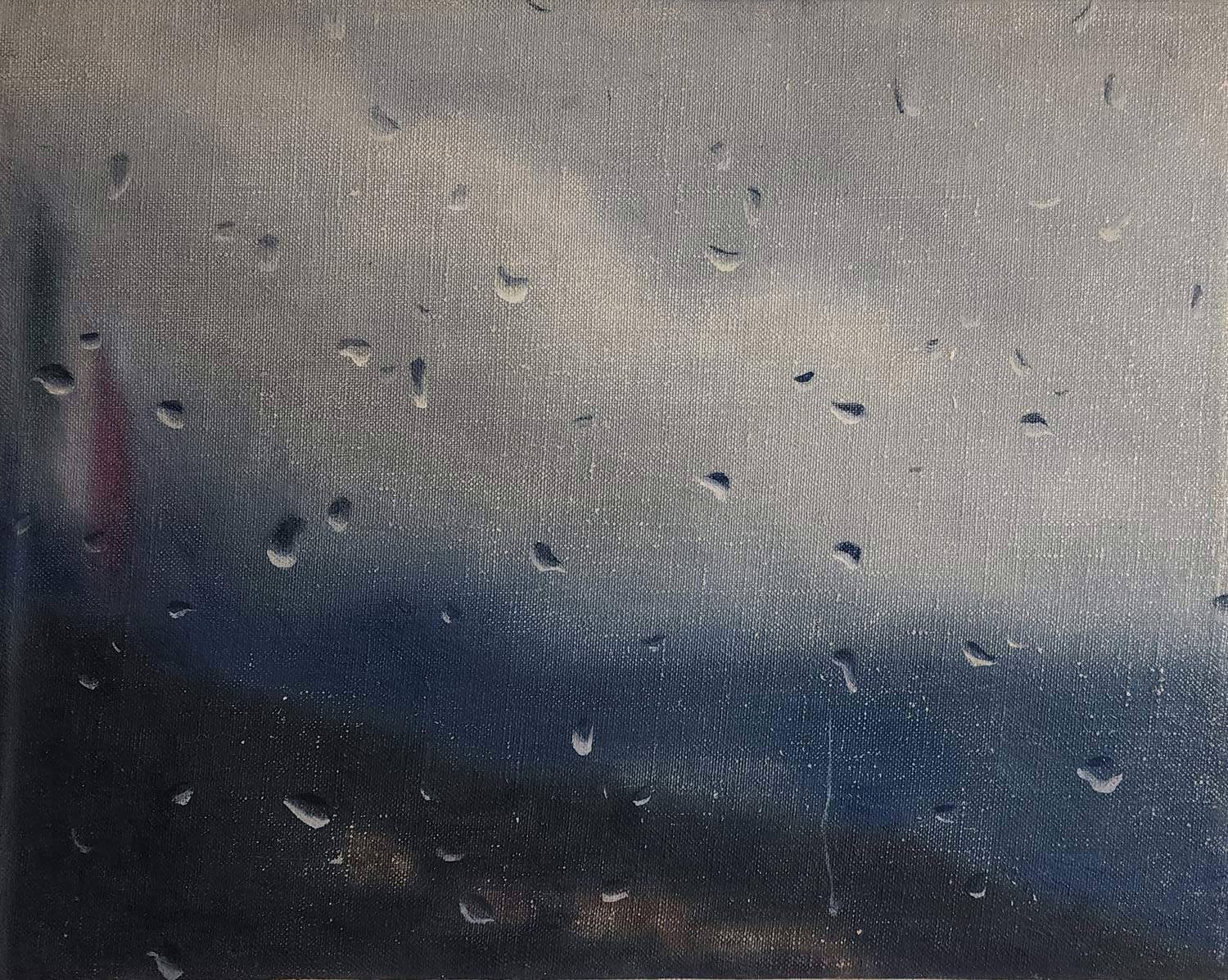
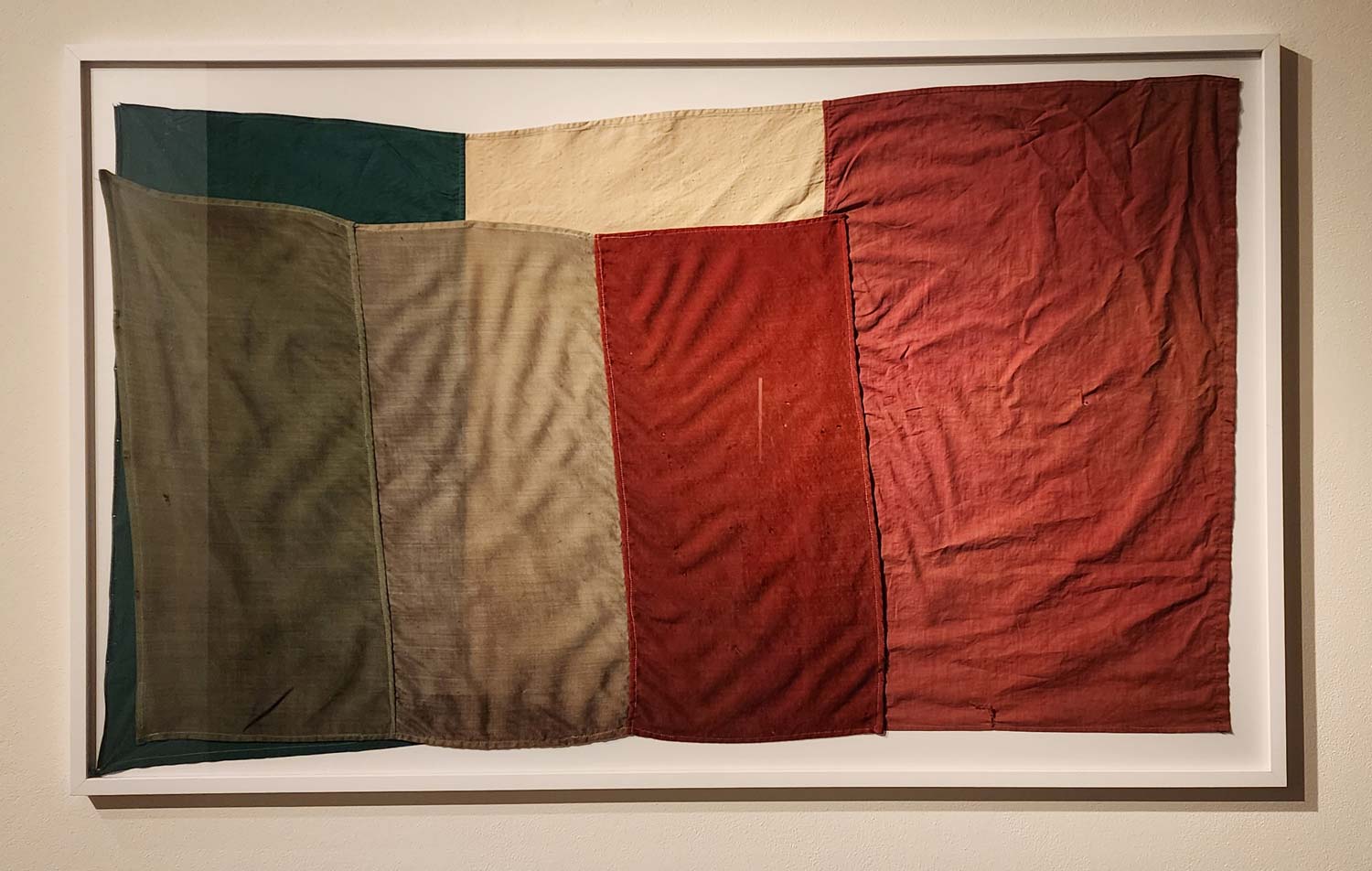
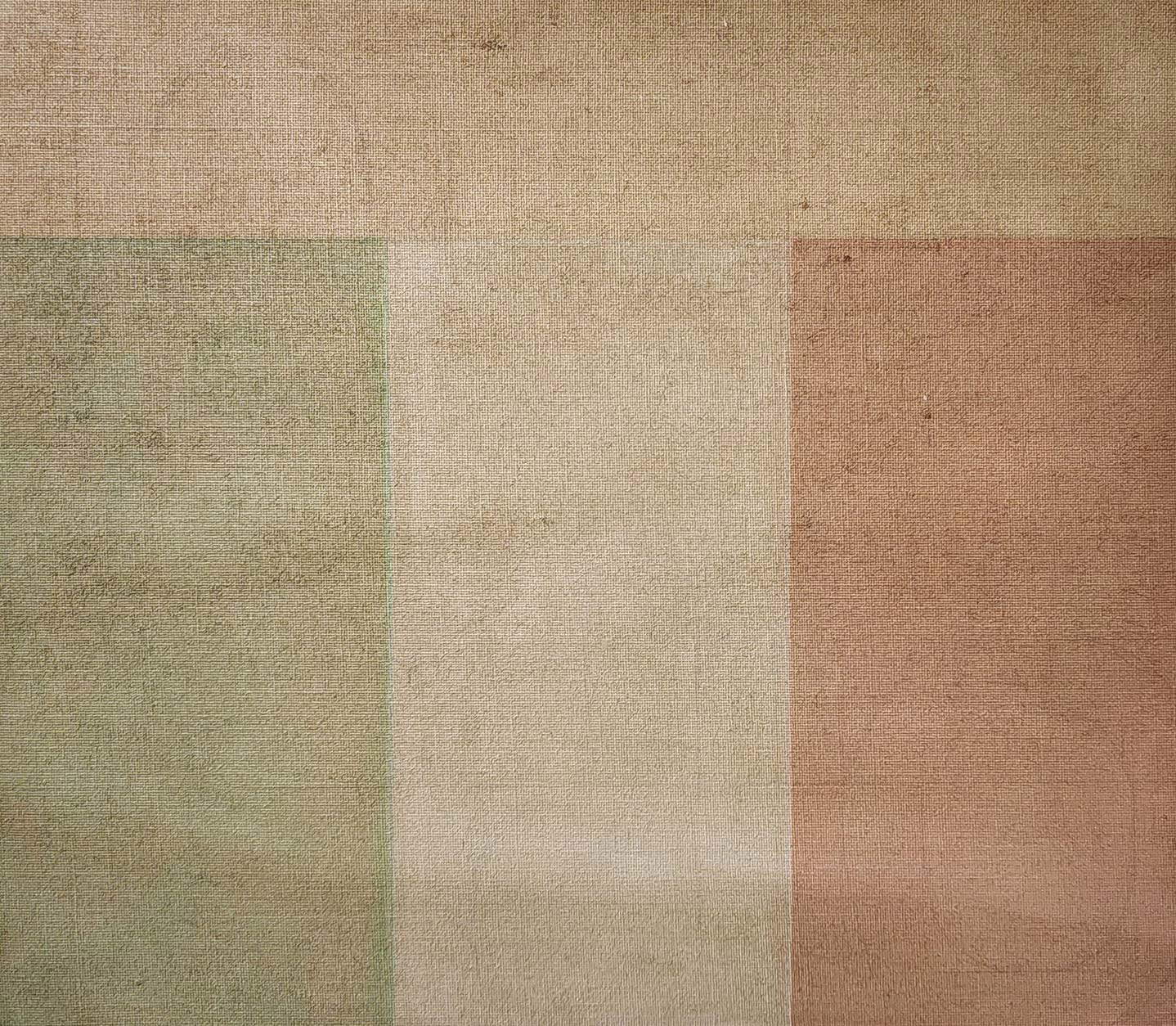
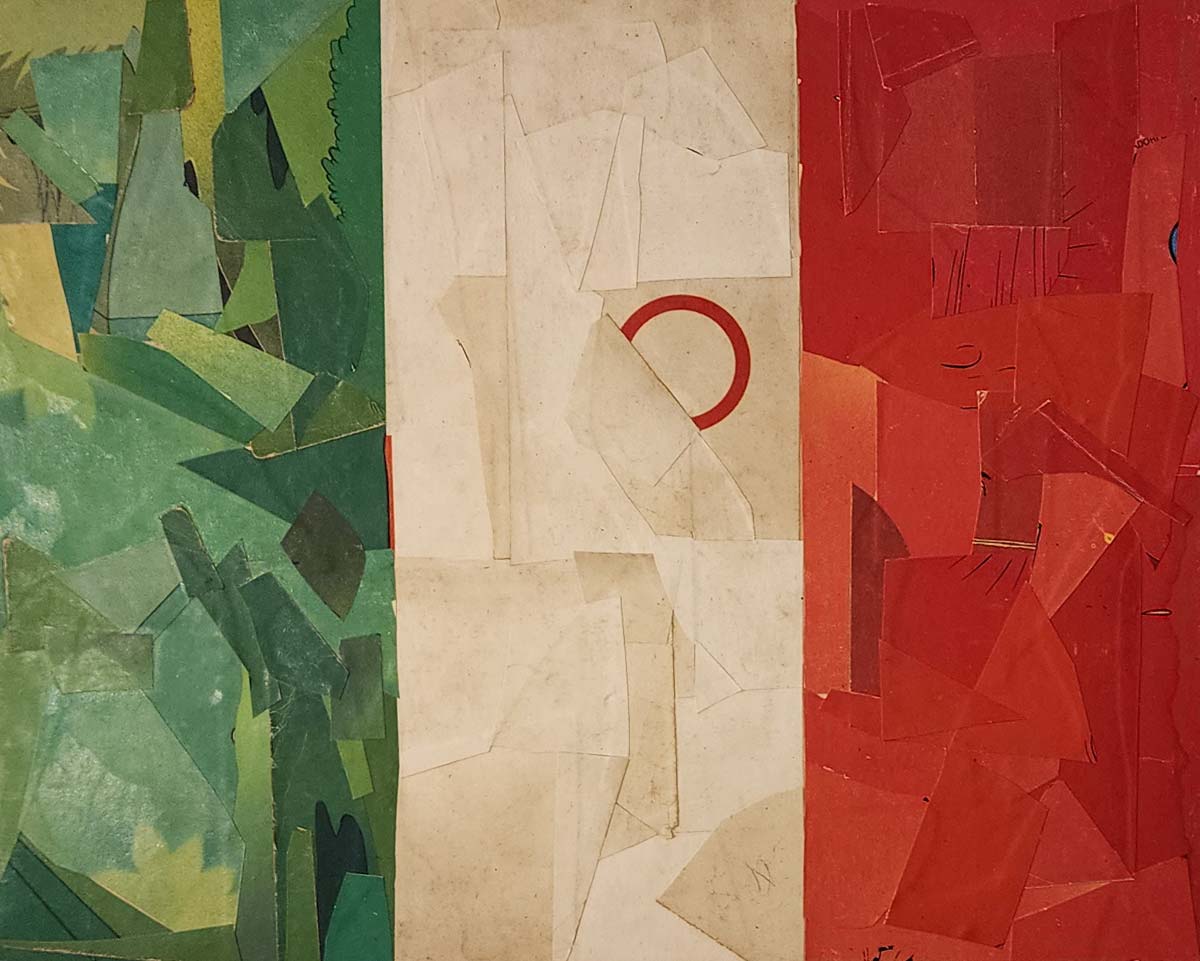
The works in the indoor spaces of the Colombiera are introduced by a tromp-l’oeil by Bertolo, a landscape covered by a blanket of fog that we seem to see through a window, complete with veristic drops furrowing the glass, an intimate, delicate, fine work: beyond the drops appears, blurred, the outline of a flag slightly moved by a gust of wind. Fogged, dirty, faded, like all the flags Bertolo has been painting for ten years now, including the one that is displayed on the wall beside it, its colors barely discernible above the canvas. A faint, pale, dull tricolor. You can see the texture of the canvas. In a text a few years ago, curator Craig Burnett wrote that Bertolo, with his flags, perhaps advances a political discourse “suggesting that nationalism is something fragile and contingent, compromised by illusion.” On a first reading, it seems that Bertolo shows us flags for what they are and always have been: pieces of cloth attached to a pole that from a certain period in history have been used to rally groups of human beings willing to recognize themselves in that regularly shaped cloth of colored cloth. And since the flag is an object common to almost all cultures, an object that has a history spanning thousands of years, it is difficult to think of it as a subject for reflection that does not admit of divergence. But the truly curious fact is that, as much as Bertolo’s flags appear to us discolored, torn, as if they had traversed centuries of history to reach us and demonstrate a kind of convulsive inauthenticity, in reality they are new, brand new, recent objects, as far as we are concerned the last flag in the series could have been painted the day before yesterday. Illusion then is the very stuff of Bertolo’s work. That’s why it dialogues perfectly with Favelli’s works: on one wall a sort of ready-made with two old flags automatically elevated to the rank of works of art, on the side instead, at the acme of parody, an Italian flag made with cut-outs of Mickey Mouse covers. It is worth mentioning that in 2020 Favelli created for the Pecci di Prato a flag of a nonexistent state that had the typical colors of a cake from Emilia. It was called Zuppa Inglese Bandiera. More irony, more ambiguity.
What are flags? Antonio Grulli asks this - for us - in the text of the exhibition. Simple objects, memories, wounds, scraps of a past that every now and then returns to resurface in the present, more recognizable elements of a world that never really left, fetishes that our liturgies cannot give up, memories, shreds, banal fabric. Icons of our history, our stubbornness, our faith, our excursions, our stupidity, our ferocity, our freedom, our flesh, our emotions. Current and inactual. Dead and alive. Indeed, for many perhaps alive today, as colorful, as bright, as lucid as they had ever been. Everything and more. Bertolo and Favelli’s works retain that ambiguity that befits true works of art (art works, should work, like poetry) and thus do not provide answers but serve, if anything, to generate other, new questions, to exhort other, new research, to activate other, new thoughts. This is the meaning of that workshop that was intended to open at the Colombiera. As for the question posed by the curator, observing Bertolo and Favelli’s works, one would come to answer with Giovanni Raboni: “they are not flags / these flags.” The only possible answer, the only one that does not shred that poetry, of the earth and otherwise, with which the flags on display at the Colombiera are imbued.
Warning: the translation into English of the original Italian article was created using automatic tools. We undertake to review all articles, but we do not guarantee the total absence of inaccuracies in the translation due to the program. You can find the original by clicking on the ITA button. If you find any mistake,please contact us.